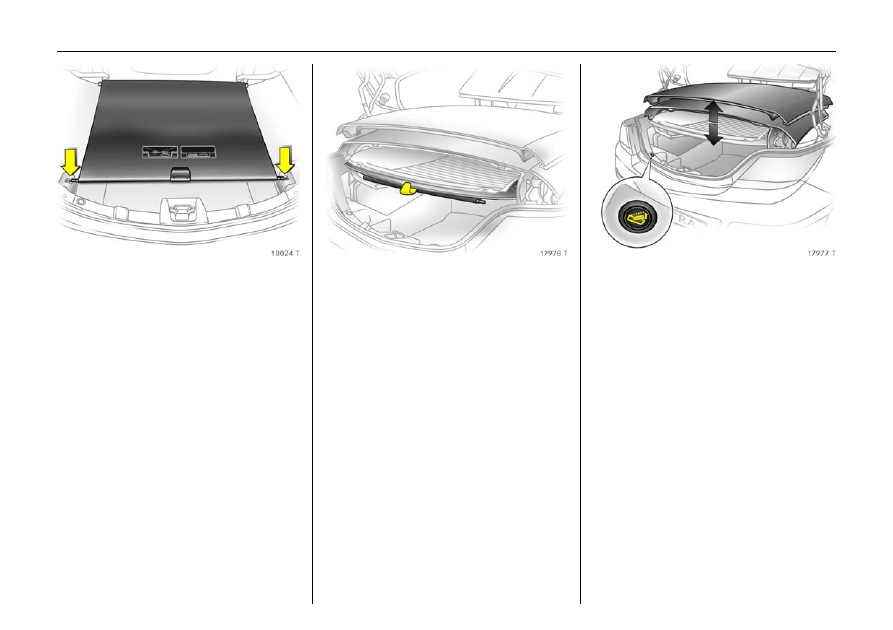Vauxhall Astravan (2007 year). Instruction - part 6

82
Seats, interior
Luggage compartment blind,
Astra TwinTop
To open:
Release luggage compartment blind from
recesses on left and right, blind rolls up
automatically.
To close:
Grasp the handle, pull the blind towards
the rear of the vehicle and engage in the
recess on the right and left.
Do not place any objects on the luggage
compartment blind.
There must be no objects outside of or on
top of the luggage compartment blind
when the roof is open or in the process of
opening.
The roof can only be operated with the
luggage compartment blind engaged in
the recess.
Easy Load
(Electronically operated loading
aid for the luggage compartment
of the Astra TwinTop)
The loading aid makes it possible to
comfortably load the luggage
compartment when the roof is open. The
press of a button will raise the roof folded
up in the luggage compartment 25 cm.
This enlarges the load opening of the
luggage compartment.
z Open the boot lid.
z Unhook luggage compartment blind
and attach to rear window frame with
holder, see Fig. 17978 T>
z Briefly press button
,
: The folded roof is
raised. The roof remains in this end
position for approx. 9 minutes.